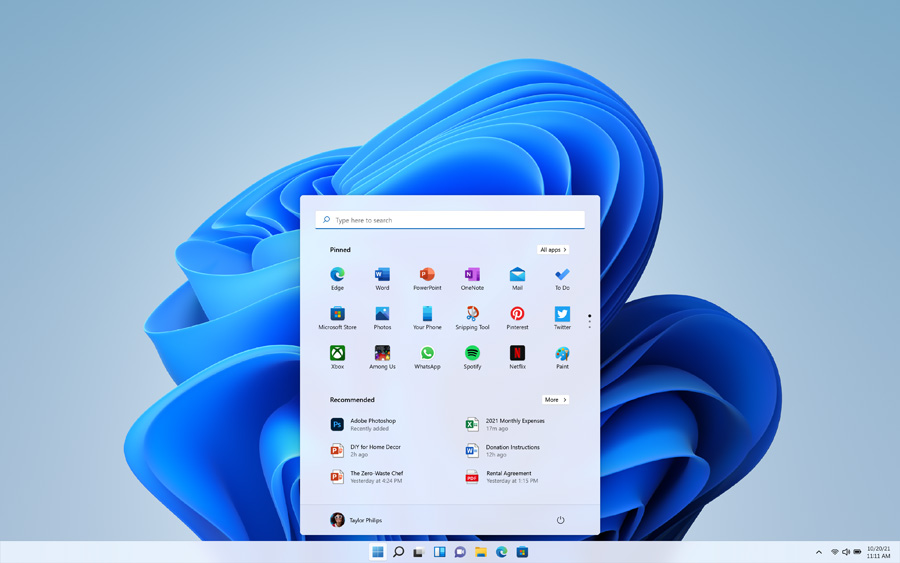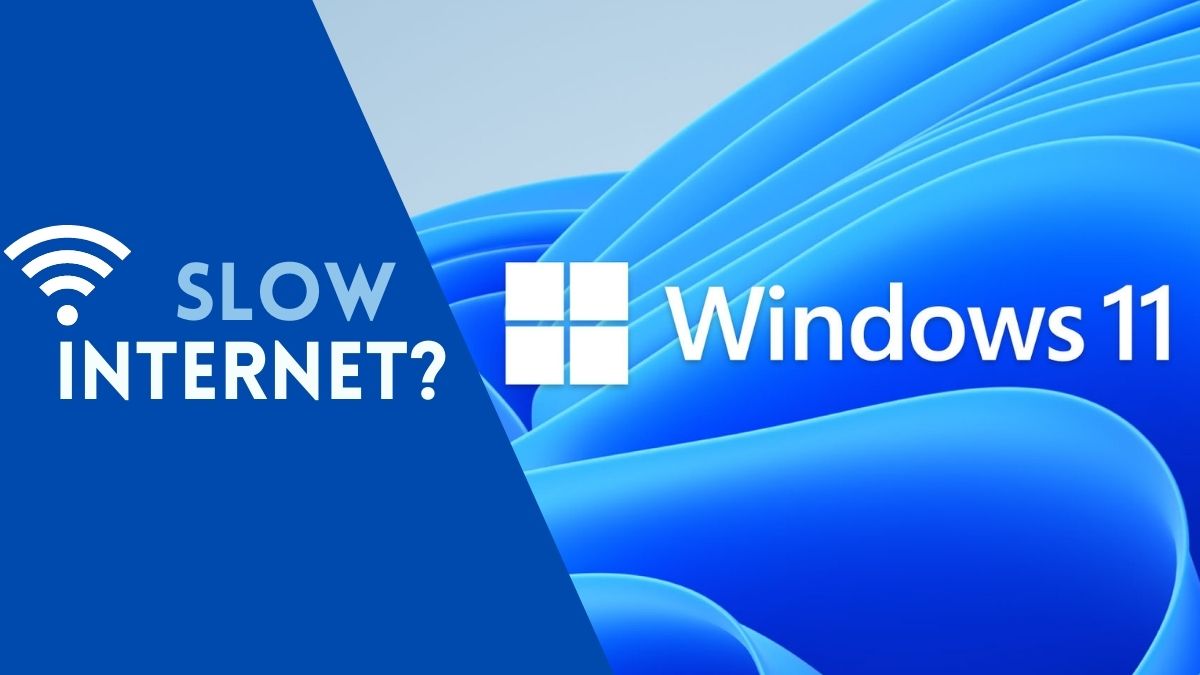On our Windows 11 PCs, many of us have problems with sluggish internet. Most people believe a fault with Wi-Fi or a mobile hotspot might cause the problem. However, in many situations, the problem might be caused by issues or defects in Windows itself. There are several methods for resolving the problem with network connections in Windows. Many of us are completely ignorant of these methods. So, in this article, we’ll go through a few well-known ways to resolve network connectivity difficulties in Windows in simple stages.

Fix Windows 11 Slow Internet Issue
The bandwidth and the speed are the two primary players in your slow internet speed connection. Both have a significant impact on the slow internet’s speed. The bandwidth is a range of frequencies that is utilized to send the signal, and the speed determines the internet’s speed capability. A number of the solutions listed below are focused on resolving Bandiwth difficulties, while others are for Speeding concerns.
Bandwidth serves as an online postman, as previously stated. When many devices connect to the same hotspot or Wi-Fi, Bandwith shares the internet, resulting in slower internet speeds. When a single device is connected, the bandwidth is focused only on providing internet to that device at maximum capacity. In the case of speed, it’s all about the initial internet speed. It is solely dependent on the bandwidth, whether indirectly or directly. You might also claim that bandwidth determines the internet’s speed, although this isn’t always the case.
There are a lot of factors that might cause a sluggish and unreliable internet connection. Weaker Wi-Fi signals, broken and malfunctioning devices, improperly set bandwidth, malware in the system, metered connection on PC, background program or process eating a lot of data, and other difficulties are among the most commonly seen. Let’s consider the best options for resolving the Windows 11 slow internet speed problem.
Ways to Increase Windows 11 Internet Speed
1. Close background app consuming data
Closing background applications that eat data in the background is the best method to save resources and achieve internet performance. We may use many applications simultaneously on Windows, and while the apps take a lot of data and bandwidth, they also cause the system to slow down. Here’s how to close background applications using a lot of data.
First, use the Windows+X keyboard shortcut, bringing up the fast access/power user menu. After that, go to the Performance menu by clicking on the Task Manager option. Now, at the bottom of the page, you’ll find a blue text that says Open Resources Manager; click on it. Now open Resource Monitor and navigate to the Network section. Under the drop-down option titled Processes with Network Activity, you can see how many programs are using data in the background. Now, right-click on the application you wish to close and select End Process from the menu. It will immediately terminate the program, which may result in a more stable and reliable Internet connection.
It’s also worth noting that merely closing the program you believe is worthless and consuming data in the background is a good idea. Close only a few programs to avoid a system crash and other problems. If this step solves your problems, you don’t need to read or continue on to the next step, but if you’re still having problems with your network, try the steps listed below.
2. Limit Bandwith for updates
Well, Windows has a function that automatically determines and optimizes the device’s bandwidth based on the scenario. However, because it relies entirely on AI, it may occasionally cause issues. If your network has problems, you can manually change the bandwidth for uploads and downloads. Here’s how to go about it.
When you press the Windows+X shortcut on your keyboard, the quick access menu will appear. Now, navigate to the Quick Access menu’s Settings section. It will now open Settings. Go to the Windows update section, then to the Advanced option, then to delivery optimizations, and then switch off the Allow downloads from other PCs option. Scroll down to Advanced Settings on that page, where you’ll find two checkboxes. Uncheck the Absolute Bandwidth item, then check the second box titled Percentage of measured bandwidth. You may select your preferred value there, and you can also modify the Upload settings to your desire.
We truly hope that your network issue will be resolved due to this. If this is not the case, proceed to the third step.
3. Look for Malware and viruses.
The Windows Security Centre may be accessed through a white shield icon in the system tray. Alternatively, type “Windows Security” into the Start menu to open it. If you’re running an older version of Windows, the program was called Windows Defender Security Centre before the October 2018 update, so launch it.
To access the antivirus page, go to the app’s home screen and click the “Virus & threat protection” tile. To scan your device, click “Current threats” and click the “Quick scan” option. This may take some time to finish, but you can continue to use your computer while it does so. When the scan is complete, you’ll receive an email notification.
When the scan is finished, the results will be shown on the “Current threats” panel. If threats were discovered, the “Threat history” button will provide you with information about them.
If the initial scan uncovers no issues, select the “Scan options” tab for a more complete examination. You may perform a “Full scan” here, which will examine every single file on your computer and any active apps. You may also perform a custom scan inside the folders you specify, which is helpful if you’ve previously identified a questionable file and want to check whether it’s a danger.
4. Change the DNS server in Windows
Changing the DNS server in Windows might help you to increase the stability and speed of the Internet in Windows. To change the DNS server in Windows, go to Control Panel, then go to Network and Internet section, then go to Network and Sharing section in that particular window, now click on Change Adapter settings. The Network Connections window displays a list of the computer’s connections. Ethernet or Local Area Connection refers to wired connections, whereas Wi-Fi refers to wireless connections.
Double-click or double-tap on the network connection symbol for which you wish to modify the DNS servers. Select Properties from the Status panel. Select Internet Protocol Version 4 (TCP/IPv4) or Internet Protocol (TCP/IP) in the This connection utilizes the following items section of the Properties window to modify the IPv4 DNS server settings, or select Internet Protocol Version 6 (TCP/IPv6) to alter the IPv6 DNS server settings. Select Properties. Select Use the following DNS server addresses in the Internet Protocol Properties window. Enter the IP address for the Preferred DNS server. Now click on OK, and it will change the DNS server.
Having that said, if you were able to fix the slow Windows 11 internet issues with the steps mentioned above, or have you faced any errors or problems while doing the process, do let us know by dropping a comment in your words below.




JohnIL
Wasn’t slow in Windows 10 was slow in Windows 11 all drivers updated? I just went back to Windows 10 problem solved. Seems like Windows 11 still has some bugs to work out and probably some hardware needs driver updates for Windows 11 not released as yet. Interesting that HP online update tool for drivers detected that I was running Windows 10 and not Windows 11. In fact I noticed that HP has very little in drivers specifically for Windows 11 except on brand new devices. So either Windows 11 just uses Windows 10 drivers which is OK. Or that many OEM’s are slow in releasing drivers updates for Windows 11. I plan to sit on the sidelines running Windows 10 for awhile until Microsoft and its partners get their poop in a group.